In order to keep creatures such as fish and lovingly cared for aquatic plants healthy, you should take a number of countermeasures if there is algae in the pond. Green algae thrive in higher temperatures and sunshine, which causes problems for many garden owners with ponds in spring. Fortunately, there are a number of ways to prevent algae growth in garden ponds, be it natural, chemical or with equipment. However, it’s better to use gentle control methods and home remedies for a number of reasons, and here are some of the best of them.
How can you identify the different algae in the pond?
Most standing water, be it in garden ponds, aquariums or lakes, are susceptible to various types of algae. They feed on sunlight and excess nutrients in the water, such as waste from fish in overcrowded tanks. Some tried and tested ways to keep garden ponds clean include adding aquatic plants and using barley straw. Natural algae eaters such as water fleas, tadpoles and snails can also help. However, it can also be useful to identify the different types of algae in order to use the best possible antidotes.
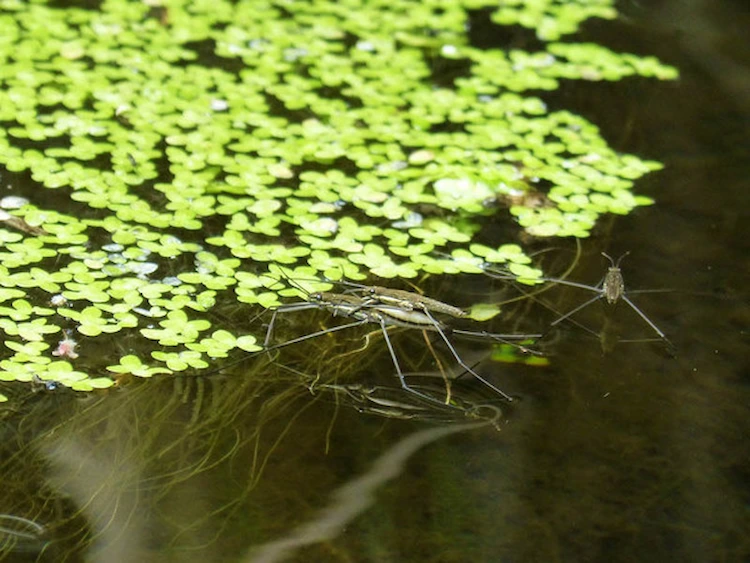
In general, there are types of algae such as blue-green and green algae, stonewort, filamentous algae, golden algae, red algae, diatoms and luster algae. However, the most dangerous of these are the blue-green algae, as they are toxic and can produce harmful algal blooms. The toxins it contains can affect the gills, liver, and nervous system, sometimes even causing death. As a general rule, however, it makes more sense to use home remedies when removing all of these types of algae in the pond. This ensures that harmful algae in the pond with fish no longer pose a threat to the creatures. Before dealing with it, it is also important to identify the possible causes behind it.
Causes of algae growth in the garden pond
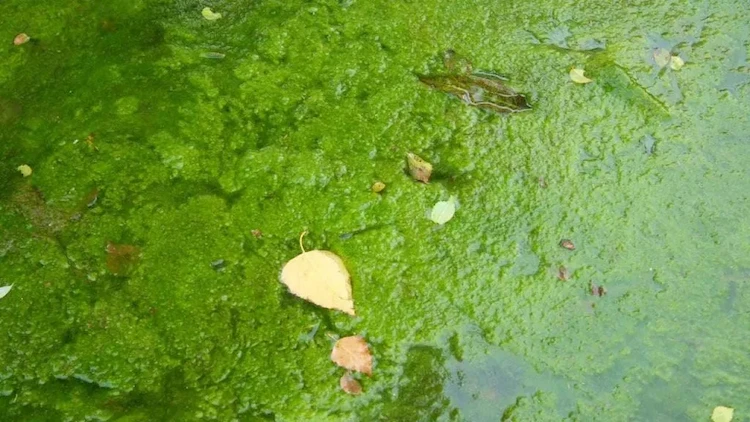
Most types of algae and the cyanobacteria that thrive in water bodies develop thanks to the nutrients they contain. In addition, the excessive accumulation of nutrients in a garden pond is considered a key factor influencing bacterial and algae growth. Some of the essential nutrients that contribute are nitrogen and phosphorus. However, there are other factors such as water temperature that also drive growth. The blue-green algae blooms described above typically develop in early spring. This is because the waters are high during rains during this warm weather period and there is more insolation. As a result, algae growth also continues in the summer months.
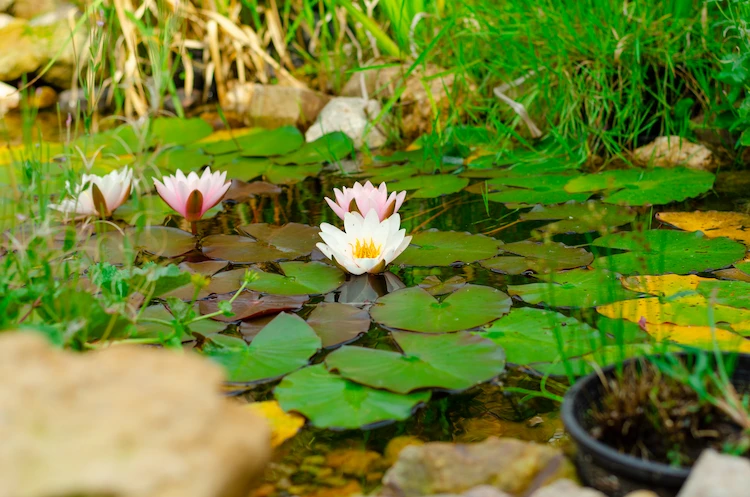
In addition, outside temperatures above 25 °C can create an optimal environment for the development of algae in the pond. In such weather conditions, blue-green algae also have a competitive advantage over other types of algae that can only thrive at lower temperatures. Algae growth can be kept in check if the plants in the water are exposed to extreme light intensity for a long time. When it comes to blue-green algae, however, this species grows most intensely when exposed to intermittent high light intensities. Such conditions are met under the water surface where the light environment is changeable.
What damage does excessive growth of algae in the pond cause?
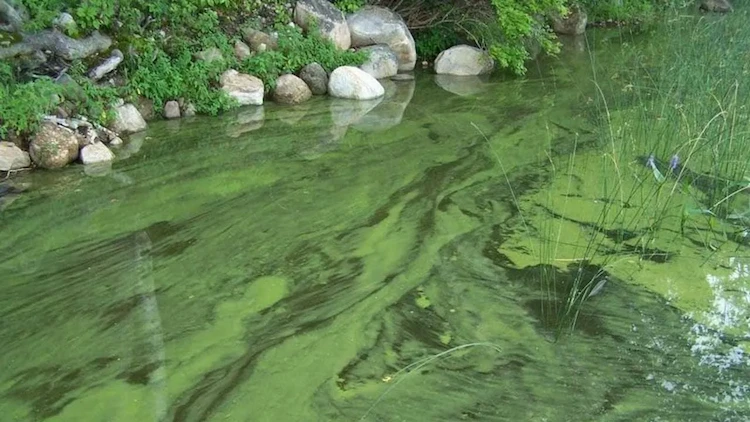
Since algae growth causes a lack of oxygen in the waters of a pond, this can make pond fish and selected pond plants fight for the vital nutrient. Accordingly, such conditions can affect the quality of life in the garden pond and cause organisms living in it to suffer. In addition, some algae in the pond are toxic to fish and can kill them, making all your efforts pointless. Another damage caused by this is the deprivation of important nutrients for aquatic plants, which can degrade water quality and appearance.
How can you fight algae in the pond with natural means?

Choosing the right pond plants is the first and most important step in natural algae control. The other important measures are not to overfeed pond fish and to breed fish species that eat algae. You can also keep algae growth to a minimum by regularly cleaning the surface water. All of these steps will also help you decide which home remedies or other solutions to try. Here are the general and most common actions you can take.
- Determination of the types of algae – The first step is to identify the algae growing in your pond. You should check whether it is green algae, golden algae, blue-green algae, red algae or other types of algae.
- Choose the appropriate method to combat algae – First of all, you should decide which control method you can use to get rid of the algae species in question most effectively. The option is to remove some manually and then use other treatments such as homemade algaecide or a mud vacuum.
- Plant the garden pond – Common pond plants such as water lilies help break down fish waste that has accumulated in the water, which normally allows the algae to thrive. You can also add some plant species, such as flowers and grass clippings, to your pond to mitigate the source of algae build-up. These also provide more shade against sun-loving algae and protect your pond fish from predators. By doing this you will also reduce bacterial growth as plants contribute to the nutrient cycling of the pond ecosystem.
- Don’t overfeed fish – Your pond fish should be fed as much food as they can consume so it doesn’t rot and cause further algae growth.
- Take preventive measures against future algae in the pond – A complete elimination of all types of algae guarantees that you can count on reduced growth. However, once you remove everything, some preventive steps are necessary to be able to solve the problem in the long run. This includes the use of home remedies, which can be used using the tips below.
Prevent algae growth with home remedies
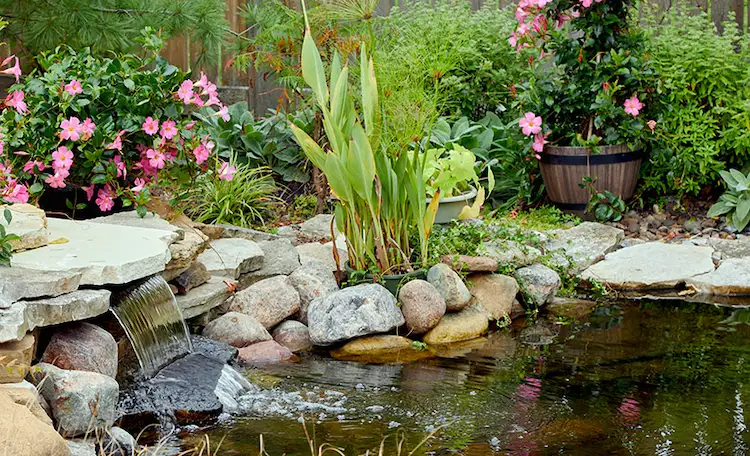
There are some homemade solutions and home remedies that can be used to combat algae in the pond. Similarly, you can also use some readily available and accessible household items and garden tools to manually remove the algae. These can be rakes, nets, gardening gloves to remove the slime, and many more. However, you should also brush the surfaces and clean the pond afterwards to prevent rot or regrowth. Otherwise, you can try the following means.
- hydrogen peroxide – With this method of combating algae, you protect your pond fish, since hydrogen peroxide is harmless to them. However, you should take the amount of water into account. For example, use ½ cup of 3% hydrogen peroxide for about 400 liters of water. You should then only apply the stuff to the affected area, being careful not to pour it directly on the fish as it can damage their gills.
- Baking soda use against algae in the pond – Baking soda is another common home remedy that you can use in the fight against algae. It helps to brush them off directly with it, using about one teaspoon per 30 liters of water. Just mix baking soda and water from your pond in a bucket and let the stuff dissolve before pouring it into the garden pond. This would accordingly change the pH of the water and make it unfavorable for algae.
- algae in the pond Vinegar Combat – Cleaning the pond with vinegar is another effective preventive measure you can take. However, this variant would only work with an emptied pond. Thanks to the acidity in the acetic acid, algae residues can be removed from all surfaces. The method also does not harm your fish and cannot change the pH value of the water.
So you can make an algaecide against algae in the pond yourself
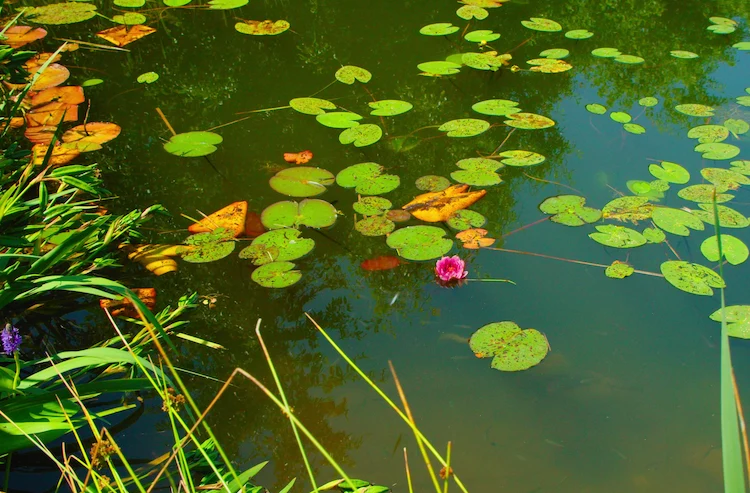
While not a typical home remedy for algae growth, homemade algaecide using a combination of bleach and well water can also be effective. However, you should also use this type of control method when the pond is empty. Otherwise, homemade bleach can be toxic to fish and plants. Otherwise, you can substitute bleach for homemade bleach to remove algae. Another option is to use organic cornmeal, but it should be pest and chemical free. You can just put 1 cup of this in a sock or pantyhose foot. Seal or tie the opening and place in the pond. The cornmeal slowly dissolves in the water and destroys algae.